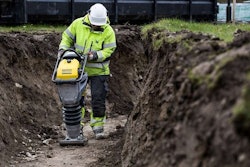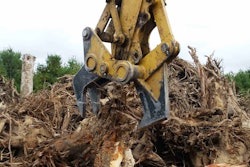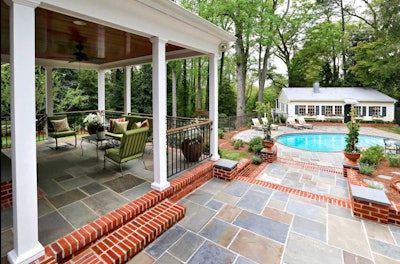 Outdoor living areas continue to be an ever popular feature as clients want to bring the indoors out.
Outdoor living areas continue to be an ever popular feature as clients want to bring the indoors out.Photo: Cartwright Landscaping
No one has a crystal ball to see what the future will bring, but often there are articles that will highlight the predicted trends for the upcoming year, regardless of the industry.
Most tend to persist from the past year, but sometimes the so-called trends of the new year sound like they’re coming out of left field with no real basis as for why people are saying they will be popular.
We talked to some landscapers about the some of the alleged trends for 2018. Below are their thoughts on some of the purported popular elements of landscape design and what they are seeing in high demand.
What articles are saying is popular
Interior plantscaping
Sources say the houseplants of 1970s are making a comeback with new creative twists. This is known as interior plantscaping and covers everything from indoor containers to green walls to interior courtyards.
Yet when asked if there was an increased interest in bringing plants indoors, the answer was no.
“Honestly, we’re going the opposite way,” said Ken Noll, owner and president of The Garden Kingdom, based in Glen Carbon, Illinois. “We used to do it, but just in our market area there aren’t enough out there. I’ve noticed 20 years ago we used to do a lot more but now people aren’t putting an atrium in their house anymore.”
Jeff Cartwright, owner of Cartwright Landscaping, based in Richmond, Virginia, says he sees homeowners keep ficus trees indoors and sometimes they’ll bring in frost-sensitive plants but there hasn’t been a big jump in interior plantscaping in his area.
As for businesses being interested in having interior plants, Toni Ann Flanigan, president of Philadelphia Garden Inc., based in the Philadelphia, Pennsylvania, says they very rarely ask about it, and often it is only in passing and never followed up on.
Minimizing lawns
Another trend homeowners are said to be interested in is downsizing their yards, but according to Cartwright and Noll it is just the opposite.
“I really don’t see that at all,” Cartwright said. “I see more people trying to get rid of bed space to have more lawn, just to simplify their yard so it’s not as busy with the landscape.”
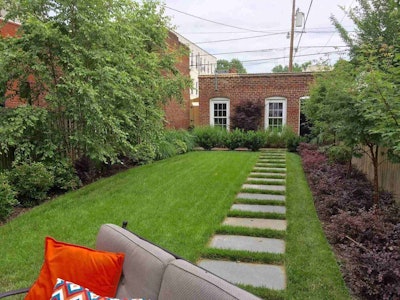 Photo: Cartwright Landscaping
Photo: Cartwright LandscapingHe goes on to explain that those who don’t want a large lawn in the first place typically don’t buy a property with a large lawn.
Noll, who is also a real estate broker, believes that the smaller yard trend is not being driven by homeowners but developers, who are trying to cut costs to increase profits.
“There’s a lot of not so good development,” Noll said. “We call them little McMansions around here because you’ve got these oversized houses where there’s only 15 feet of yard on each side of the house where it used to have 30 or 40 feet between houses. So, I think it’s a changing trend. I think it’s going to start shifting back. I don’t think it’s so much people are saying ‘I want a smaller yard.’ I don’t think that’s really it. I don’t think they’re saying that. I think that’s all that’s really available here.”
Flanigan says that the homeowners are never the ones who say it’s too much lawn.
“I say to them ‘That’s too much lawn,’” she said. “It’s not like they’re saying, ‘Help me stop mowing the lawn.’ I don’t have that feedback.”
Year of the Tulip
The National Garden Bureau has announced 2018 as Year of the Tulip saying that the plant says “spring” like no other flower.
When asked about what types of tulips they thought would be popular, both Cartwright and Noll admitted to not using tulips often.
“We don’t really use tulips that much,” Cartwright said. “There’s so many deer and bunnies. There’s tons of bunnies in our area and bunnies tear tulips up so you know unless it’s a really protected area we don’t get into tulips too much.”
Noll says in his opinion bulbs are long gone, at least in his area, falling out of popularity around 10 years ago.
“We just have too many rodents around here and people are tired of doing them,” he said.
In the city where wildlife is less of a problem, Flanigan likes using green tulips for their naturalistic appearance and she is also a fan of the Antoinette tulip from Van Engelen that starts out yellow and then turns pink.
Safe havens for wildlife
Speaking of wildlife, another landscaping feature customers are said to be attracted to is creating pollinator gardens and spaces that provide habitats for local fauna.
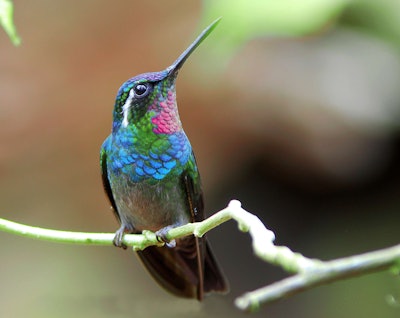
“We’ve advocated but people don’t care,” Noll said. “I’m reading it and I’m think there’s something wrong with us and when I’m out there and I try to push something the answer is typically ‘No, I want no maintenance.’”
In Cartwright’s region, he has a handful of clients who have taken up beekeeping, but he says it isn’t widespread.
Flanigan says that attracting wildlife has been an angle of her business for at least 20 years and says it’s nice that it’s a trend now.
“I’m not saying that necessarily the client requests that because I would say maybe 10 to 15 percent request it but when we offer it, it’s a big bonus and when in fact a hummingbird comes to the 25th floor downtown they’re really happy about it,” she said.
What landscapers are seeing
Small gardens
As mentioned earlier, the smaller gardens are not necessarily a choice for homeowners, but as the landscapers deal with them more and more often, they welcome it.
“That’s actually probably our favorite situation,” Noll said. “It really forces the creativity.”
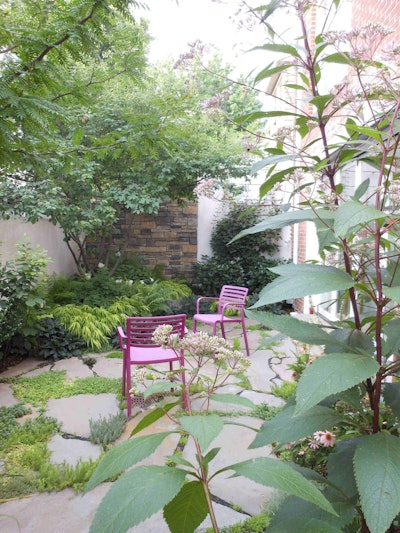 Small gardens can still be useful spaces if designed properly.
Small gardens can still be useful spaces if designed properly.Photo: Toni Ann Flanigan, Philadelphia Garden, Inc.
In the Richmond area, Cartwright doesn’t have to deal with smaller gardens as often, but one area does have more compact green spaces.
“I think you have to give it a lot more design thought…it’s almost more difficult because that place is smaller, you see everything in a very compact area,” Cartwright said. “You have to spend more time on the design, more focal points in the landscape, mixing hardscapes, potential water features, you know getting creative in how you put the lawn in and how the landscaping revolves around the lawn.”
The key element to designing in smaller gardens is to keep the customer’s wants in mind and be very deliberate about how the space will be used.
“Also for designing a small garden you definitely want to make sure you are screening the things you don’t want to see,” Flanigan said. “And so that’s done with your plant material, so you’re constantly looking at the view corridor to make sure that the view that you want to see is being framed by the plant material that you’re putting in.”
Dog-centric landscape design
Dogscaping may seem like something only the most eccentric owners would be interested in, but Flanigan has noticed an uptick in people wanting their landscape catered towards their pets.
“Everybody’s getting dogs man, everybody’s getting dogs,” she said. “They’re like ‘Can you have a place for my dog to pee?’ I mean I think dogs are the number one big hobby. I don’t know if you’d call them a hobby or not but they’re a big deal, so I would say that’s a big trend.”
More fire features
While natural gas open fires are against zoning in Philadelphia, Flanigan says she does see a lot of interest in fire pits.
“I just always suggest they get a portable one because again we’re talking about smaller gardens in general so I suggest they get a portable one,” she said. “I suggest they get one that’s high quality that has wrought iron so that the piece heats up and warms you because there’s so many of these portable fire pits that make you colder because they don’t heat up anything. It’s a weird thing but that’s true.”
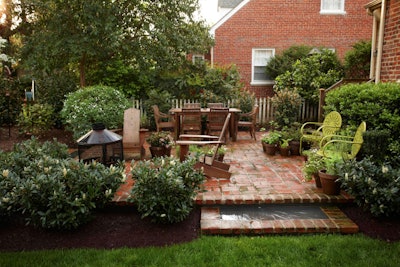 Portable fire pits allow homeowners to maximize their patio space if they only use it sparingly.
Portable fire pits allow homeowners to maximize their patio space if they only use it sparingly.Photo: Cartwright Landscaping
Cartwright agrees that homeowners should start with a small, portable one to see if they’re really going to use it to prevent valuable patio space from being wasted.
“I think there’s so much you can do around it and people are doing patios and it just kind of fits in especially as you get more north they get more practical because they extend that outdoor living space into later on in the year when it gets colder,” he said.
Noll has noticed that it is about 50/50 in his region for wood-burning and natural gas fire pits, but he does more free-standing fireplaces than fire pits.
“Both of them are focal points, just different uses,” Noll said. “Fire pits you obviously have more options to sit around and create seating and that kind of thing, whereas the fireplace somebody might have the option of putting an outdoor TV and hanging it up above the fireplace or you know it’s just their personal preference, and maybe to block out a neighbor or something.”
Continued interest in outdoor living spaces
Some might be reluctant to call this a trend at all nowadays and simply more of a staple, but Noll says there is still increased interest in outdoor living spaces.
“People want more hardscaping, kitchens, fire pits, seating areas, covered porches,” he said. “They’re looking to expand their outdoor living, so I think in my opinion that’s where the money is going. People are thinking ‘I want more outdoor living space,’ not ‘I want more flowers and gardens and maintenance.’”
“The outdoor entertaining trend has been gaining momentum over the past several years, and this year has seen a further desire to bring the indoors out,” Missy Henriksen, vice president of public affairs for the National Association of Landscape Professionals, told Elle Decor. “In particular, the warmer fall months will lend themselves to increased attention on outdoor spaces, as homeowners look to extend the summer outdoor entertaining season and adapt their landscapes for enjoyment throughout the year.”


